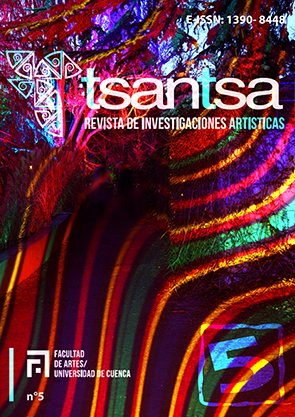Estética de la forma en la Tercera Sinfonía de Avet Terterian
Resumen
Aesthetics of the form in Avet Terterian's Third Symphony
Resumen:
El artículo pertenece a uno de los resultados del proyecto “Teoría de la Forma: estrategias artísticas y teóricas para la superación del canon posmoderno”, investigación que cuenta con el aval de la Facultad de Artes y la Dirección de Investigación de la Universidad de Cuenca.
A partir de la teoría general de la forma de las estéticas caníbales, se realiza un estudio musicológico y hermenéutico del compositor armenio, Avet Terterian, tomando como ejemplo su Tercera Sinfonía, obra pionera en la sinfonía del siglo XX. Se observa como la modernidad ha fracturado el tiempo y lo ha llevado a nuevas temporalidades en donde han surgido manifestaciones estéticas alternativas como es el caso de la música contemporánea. En el caso de Terterian se trata de una vivencia interna profunda, que escapa al tiempo cronológico constituyendo una “fractura del tiempo” que exige empezar por lo imposible.
Palabras clave: Distinción, duduk, estética caníbal, forma, sinfonía, substancia, mundo arte, textura, tiempo, timbre, zurna.
Abstract:
The article belongs to one of the results of the project "Theory of Form: theoretical and artistic strategies for overcoming the post-modern canon", research that has the endorsement of the Direction of Research of the University of Cuenca and the Faculty of Arts. From the general theory of the form of the aesthetic cannibal theory, is a hermeneutic musicological study of the Armenian composer Avet Terterian, taking as an example his Third Symphony, the work pioneered the Symphony of the 20th Century. Seen as modernity has fractured time and brought him to new speeds where alternative aesthetic manifestations have emerged as in the case of contemporary music. In the case of Terterian is a deep inner experience, to fall outside the chronological time constituting a "fracture of time" that demands the beginning of the impossible.
Keywords: Distinction, duduk, Cannibal aesthetic, form, Symphony, substance, world art, texture, time, timbre and zurna.



